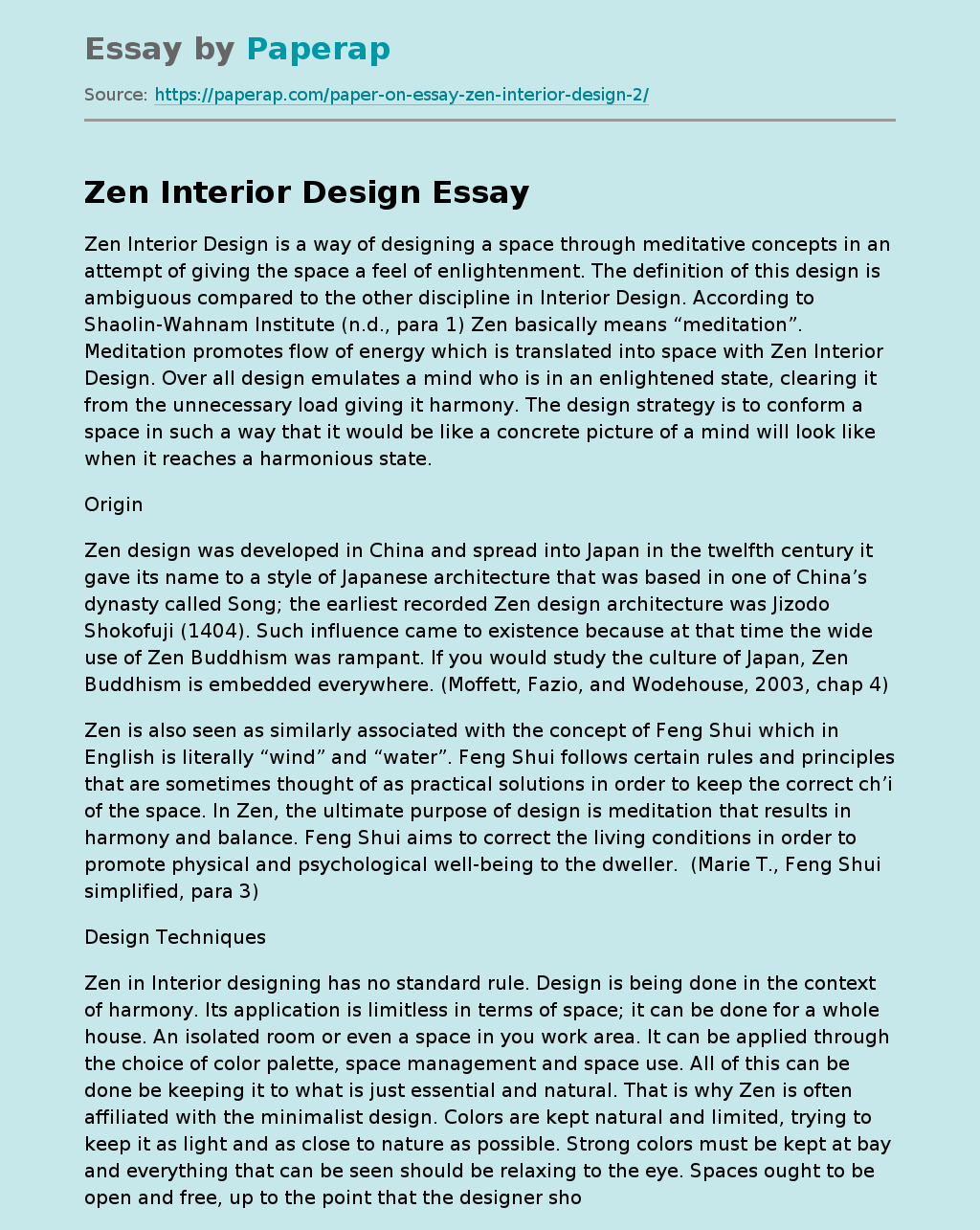Zen Interior Design Techniques
Zen Interior Design is a way of designing a space through meditative concepts in an attempt of giving the space a feel of enlightenment. The definition of this design is ambiguous compared to the other discipline in Interior Design. According to Shaolin-Wahnam Institute (n.d., para 1) Zen basically means “meditation”. Meditation promotes flow of energy which is translated into space with Zen Interior Design. Over all design emulates a mind who is in an enlightened state, clearing it from the unnecessary load giving it harmony.
The design strategy is to conform a space in such a way that it would be like a concrete picture of a mind will look like when it reaches a harmonious state.
Zen design was developed in China and spread into Japan in the twelfth century it gave its name to a style of Japanese architecture that was based in one of China’s dynasty called Song; the earliest recorded Zen design architecture was Jizodo Shokofuji (1404).
Such influence came to existence because at that time the wide use of Zen Buddhism was rampant. If you would study the culture of Japan, Zen Buddhism is embedded everywhere. (Moffett, Fazio, and Wodehouse, 2003, chap 4)
Zen is also seen as similarly associated with the concept of Feng Shui which in English is literally “wind” and “water”. Feng Shui follows certain rules and principles that are sometimes thought of as practical solutions in order to keep the correct ch’i of the space. In Zen, the ultimate purpose of design is a meditation that results in harmony and balance.
Feng Shui aims to correct the living conditions in order to promote physical and psychological well-being to the dweller. (Marie T., Feng Shui simplified, para 3)
Zen in Interior designing has no standard rule. Design is being done in the context of harmony. Its application is limitless in terms of space; it can be done for a whole house. An isolated room or even a space in you work area. It can be applied through the choice of color palette, space management and space use. All of this can be done be keeping it to what is just essential and natural. That is why Zen is often affiliated with the minimalist design. Colors are kept natural and limited, trying to keep it as light and as close to nature as possible. Strong colors must be kept at bay and everything that can be seen should be relaxing to the eye. Spaces ought to be open and free, up to the point that the designer should induce the illusion of it. Strategically placing mirrors and windows that will help spread light is one of the known strategies to achieve this. Allowing the space to be simple and close to its use is another technique often applied in this type of design. (Applying Zen to Interior Decorating, para 1)
Zen design is currently widely used in the industry of Interior Design. It was again largely noticed in the recent years entering 21st century. In residential homes it is simply not utilized for its beauty and charm but it gives the dweller a personal space as their own sanctuary, from today’s common busy lifestyle. (Mcevoy, Interior Design Style, para 5). Not only that, today’s housing especially in most of the South East Asian are getting smaller. With this kind of design on these houses a lot of issues can be addressed. Dwellers will be comfortably situated in their houses even if space is limited.
The business sector benefits from this as well. Their commercial and industrial facilities, adapt some of its design because its parameters contribute to a lot of things like efficiency of flow in a workspace and improvement of or working environment. To them it affects the worker’s psyche which entails operation cost reduction, which is has a great impact to businesses.
Zen Interior Design Techniques. (2019, Jun 20). Retrieved from https://paperap.com/paper-on-essay-zen-interior-design-2/

